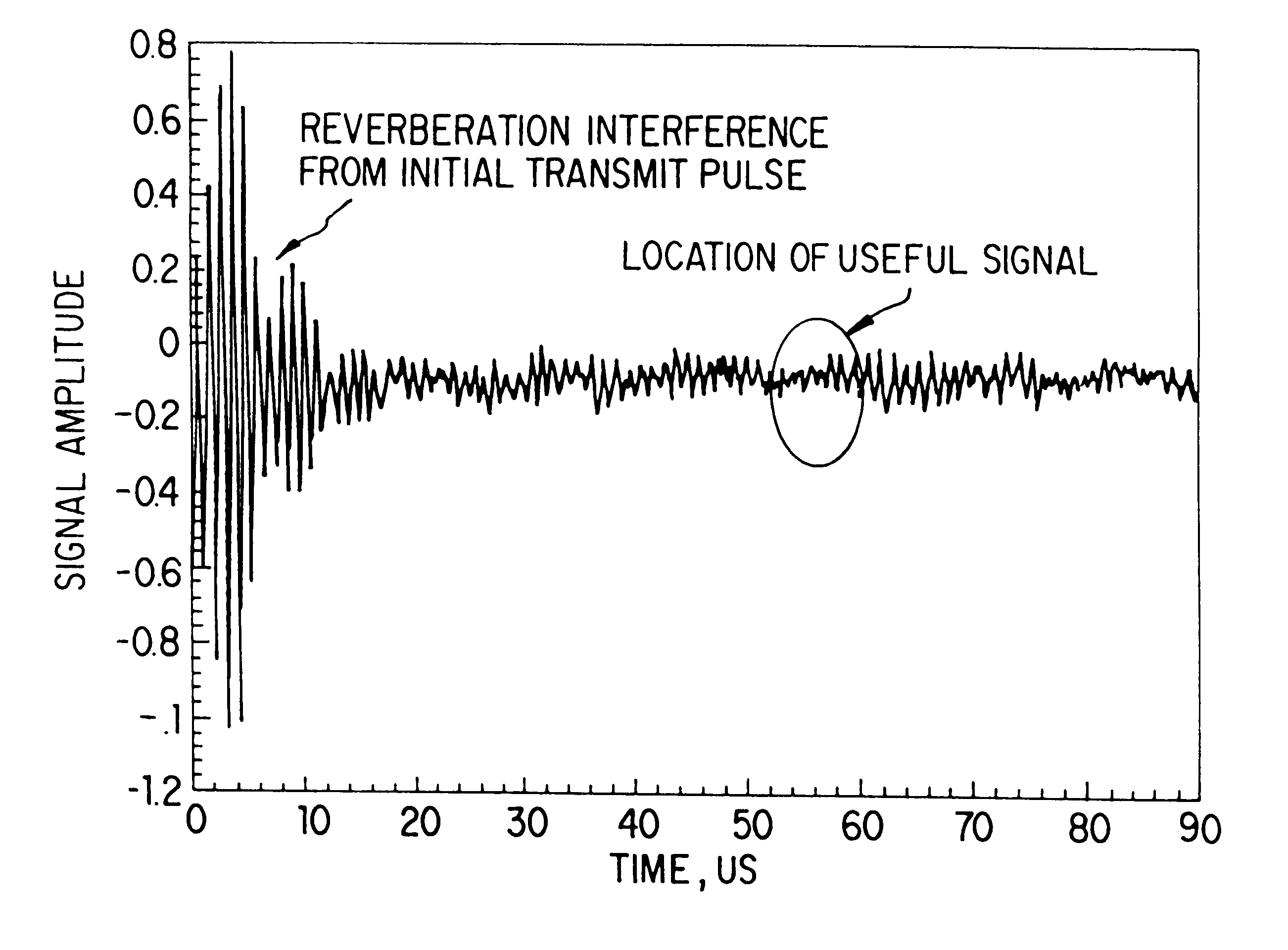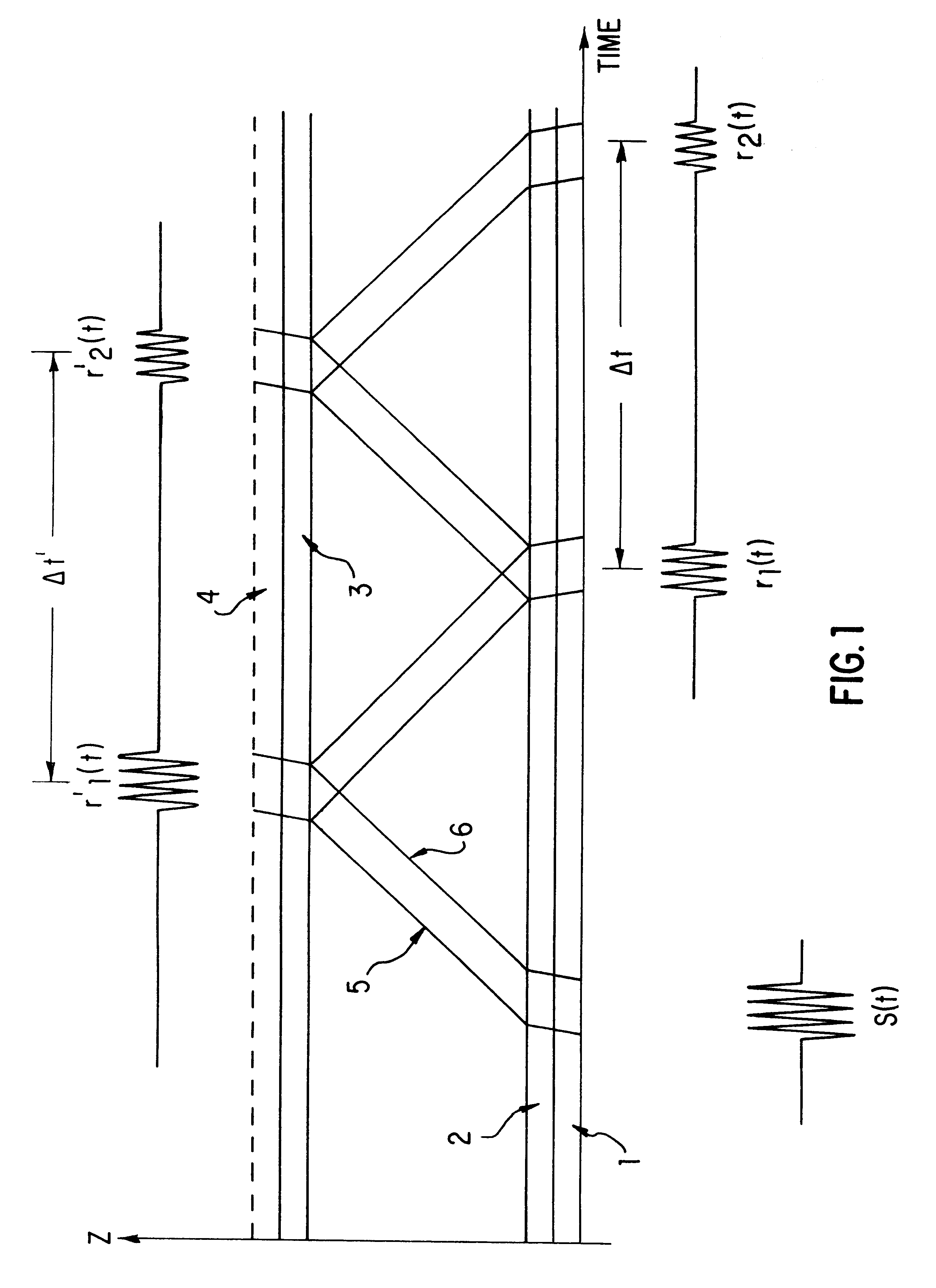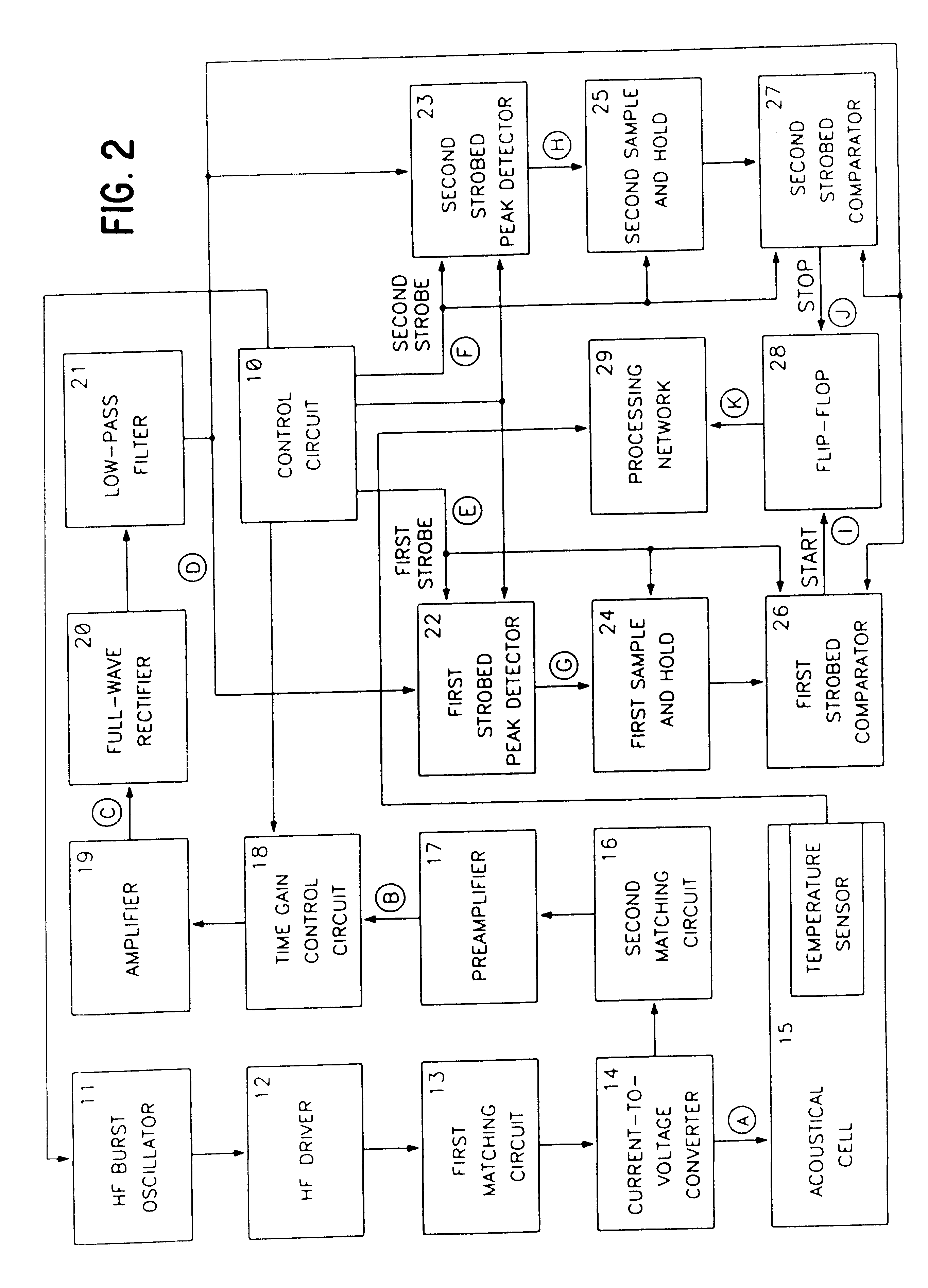Apparatus and methods for performing acoustical measurements
a technology of acoustic measurement and an apparatus, applied in the field of acoustic measurement, can solve the problems of insufficient accuracy of the approach, and inability to accurately predict the pick-up rate of bubblers
- Summary
- Abstract
- Description
- Claims
- Application Information
AI Technical Summary
Benefits of technology
Problems solved by technology
Method used
Image
Examples
example
This example compares the results of using the mixing rule of equation (56) of the present invention with that of equation (7) of the prior art in determining the concentration of a gas of interest in a binary mixture from a speed of sound measurement performed on the mixture. For purposes of illustration, the binary mixture has been assumed to comprise trans-1,2-dichloroethylene (the gas of interest) and nitrogen (the carrier gas). The thermodynamic and mechanical properties of both these gases are well known.
The results of the comparison are shown in FIG. 30, where the solid curve is based on the mixing rule of equation (56) and the dashed curve on that of equation (7). The measured speed of sound for a mixture of trans-1,2-dichloroethylene (DCE) and nitrogen produced by a bubbler system operating at a temperature of 20.degree. C. and a pressure of 760 torr is 242.54 m / s. From FIG. 30, we can see that this speed of sound corresponds to a G.sub.DCE / G.sub.N2 ratio of 1.8271 when th...
PUM
| Property | Measurement | Unit |
|---|---|---|
| speeds | aaaaa | aaaaa |
| frequencies | aaaaa | aaaaa |
| particle size | aaaaa | aaaaa |
Abstract
Description
Claims
Application Information
 Login to View More
Login to View More - R&D
- Intellectual Property
- Life Sciences
- Materials
- Tech Scout
- Unparalleled Data Quality
- Higher Quality Content
- 60% Fewer Hallucinations
Browse by: Latest US Patents, China's latest patents, Technical Efficacy Thesaurus, Application Domain, Technology Topic, Popular Technical Reports.
© 2025 PatSnap. All rights reserved.Legal|Privacy policy|Modern Slavery Act Transparency Statement|Sitemap|About US| Contact US: help@patsnap.com



